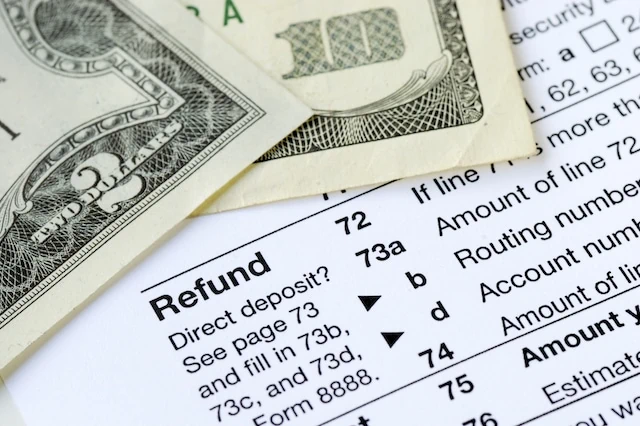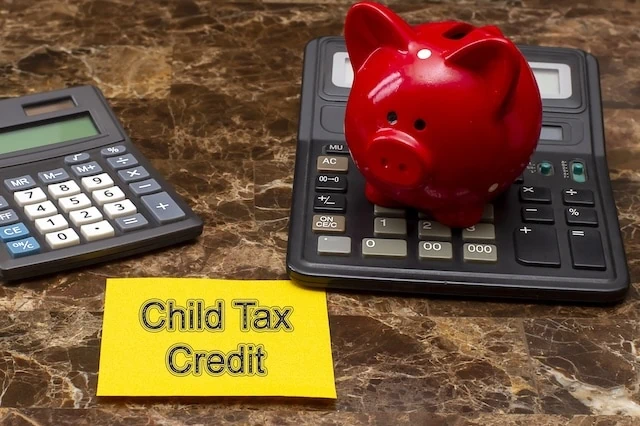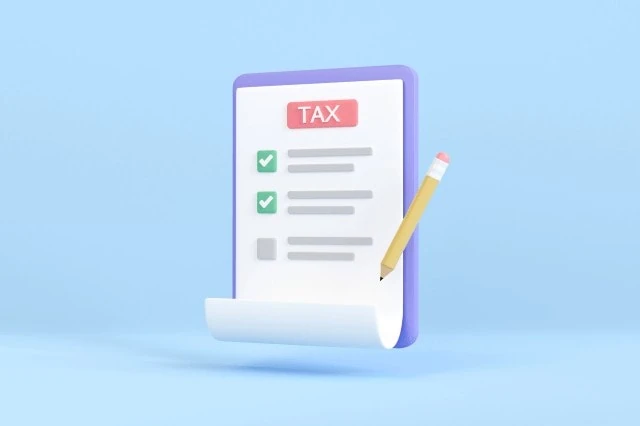In a rare bipartisan move, the U.S. House of Representatives overwhelmingly passed a tax bill that, among other things, would temporarily raise the child tax credit for millions of American families.
The bill is now headed to the U.S. Senate, where it faces an unknown future. The politics behind this bill are complicated, so at this point it’s too difficult to predict how it will fare in the Senate. If the Senate does pass the bill, it will be sent to the White House for President Biden’s signature.
If it’s eventually signed into law, many people would see an increase in the child tax credit for the 2023 tax year, which is reported on the tax return parents are filing this year. So, the legislation would have an immediate impact on some taxpayers’ bottom line.
WealthUp Tip: Federal income tax returns for the 2023 tax year are due April 15, 2024 (April 17 for residents of Maine and Massachusetts).
As I’ll explain, the changes would boost both the basic child tax credit and the “refundable” portion. Lower-income taxpayers would benefit the most from these changes … particularly from the higher refundable credit amounts. However, every parent who qualifies for the child tax credit will benefit if the bill is enacted. For that reason, all families with qualifying children should educate themselves about the potential changes now, so they know what to do if the bill does become law.
How Much Is the Current Child Tax Credit?

Under current law, parents can claim a child tax credit of up to $2,000 for each “qualifying child” who is under 17 years of age at the end of the tax year. So, for example, if you have three kids who all qualify for the child tax credit, you can claim a total credit of up to $6,000.
A $2,000 credit is the maximum, but not everyone gets the full amount. If your modified adjusted gross income (AGI) is greater than $200,000 ($400,000 for married couples filing a joint tax return), your child tax credit is reduced by $50 for each $1,000 (or fraction thereof) you’re over the income limit.
For example, imagine that a married couple with three qualifying children files a joint tax return. If their modified AGI is $425,000, their child tax credit is reduced by $1,250 ($50 x 25 = $1,250). So, instead of the maximum credit of $6,000 for their three children, the couple’s child tax credit is only $4,750 ($6,000 – $1,250 = $4,750).
How Much of the Current Child Tax Credit Is Refundable?

There are three basic types of tax credits: fully refundable, non-refundable, and partially refundable credits.
- A fully refundable tax credit can reduce the tax you owe below $0 and trigger a tax refund. For example, if you owe $1,000 in tax and qualify for a $1,200 fully refundable credit, you’ll get a $200 tax refund.
- With a non-refundable tax credit, the best it can do is reduce your tax to $0. For instance, if you owe $1,000 in tax and qualify for a $1,200 non-refundable credit, you won’t owe taxes but you won’t get a tax refund, either. In this case, you essentially end up losing part of the credit.
- Then there’s partially-refundable tax credits. As the name suggests, some, but not all, of a partially-refundable credit can trigger a tax refund. As an example, if you owe $1,000 in tax and qualify for a $1,200 credit, you might only get a $100 tax refund.
The child tax credit is a partially-refundable credit. However, the refundable portion—which the IRS calls the “additional child tax credit”—is limited in two important ways, so not everyone can get it (or get the full amount).
First, the additional child tax credit is currently limited to $1,600 per qualifying child for the 2023 tax year (it’s scheduled to be $1,700 per child for 2024).
In addition, as it stands right now, the refundable portion of the credit generally can’t exceed 15% of your earned income over $2,500. If you have three or more qualifying children, this cap can be increased to an amount generally equal to the amount of Social Security, Medicare, and Additional Medicare taxes withheld from your paychecks during the tax year, minus any earned income tax credit claimed for the tax year.
How Would the Child Tax Credit Change?

If the tax legislation is enacted into law, the child tax credit would change in four different ways (which I’ll explain in a minute).
You might notice that all the changes are temporary and don’t impact tax years after 2025. That’s because other changes to the child tax credit are set to take effect in 2026. That’s when temporary changes to the credit put in place by the Tax Cuts and Jobs Act (TCJA) of 2017 expire.
It’s widely believed that Congress will revisit the TCJA changes before they expire in 2026. That’s why the proposed revisions to the child tax credit in the House-passed bill are limited to the 2023, 2024, and 2025 tax years.
What else might Congress do to the child tax credit before 2026? It’s too soon to tell. We’ll most likely have to wait until after the November elections to get a clearer picture. At that point, we’ll know who will control the White House and Congress in 2025.
Related: 9 Benefits of Filing Taxes Early
1. Higher Child Tax Credit Maximum
There are dozens of tax code dollar amounts that are increased each year to account for inflation, including the standard deduction, tax bracket thresholds, gift tax exclusion, IRA contribution limits, and more. Annual adjustments for inflation help maintain the value of tax breaks and prevent people from paying a tax at a higher rate when their income doesn’t increase at the rate of inflation.
However, the $2,000 maximum child tax credit amount doesn’t change from year-to-year under current law. Even if inflation is high, parents can’t claim a per-child credit greater than that amount.
The tax bill passed by the House would allow the $2,000 maximum credit to be increased for the 2024 and 2025 tax year to account for inflation (rounded down to the nearest $100). It would not change the maximum credit for tax returns being filed this year for the 2023 tax year.
Related: 8 Free Tax Filing Options for 2024
2. Higher Refundable Portion of Child Tax Credit
The $1,600 cap on the additional child tax credit (i.e., the refundable portion) would also rise if the House-passed tax bill eventually becomes law.
It would jump to $1,800 for the 2023 tax year. So, millions of parents would get an additional $200 tax refund on the federal tax return they file this year. The refundable credit limit would also increase to $1,900 for the 2024 tax year, and then to $2,000 for 2025.
This is particularly helpful for lower-income taxpayers, who frequently lose out on part of their child tax credit because their tax liability (before the credit) is typically low. For example, under current law, if you have three qualifying children in 2023 (for a $6,000 credit) and your tax liability for the year is only $1,000, you can claim a $1,000 non-refundable credit and a $1,600 refundable credit for a total of $2,600 in credits … and lose the remaining $3,400.
On the other hand, a wealthier person with a higher pre-credit tax bill gets to claim the full credit. For instance, if you have three qualifying children in 2023 (again, for a $6,000 credit), but you owe $7,000 in tax for the year because your income is relatively high, you can claim the full $6,000 as a non-refundable credit.
3. Increased 15%-of-Earned-Income Cap on the Refundable Child Tax Credit
The other cap on the refundable portion of the child tax credit (i.e., limiting it to 15% of your earned income over $2,500) would also be loosened if the House-approved tax bill becomes law—at least for families with more than one qualifying child.
Under the pending legislation, the 15%-of-earned-income cap on the additional child tax credit would be multiplied by the number of qualifying children in the family. This change would apply to the 2023 to 2025 tax years.
Again, this would immediately benefit certain lower-income parents. For example, under current law, if a married couple has two children (for a $4,000 maximum credit) and a $1,000 pre-credit tax bill, they would be able to claim a $1,000 non-refundable credit and a refundable credit of up to $3,000 for the 2023 tax year. However, if they only have $20,000 of earned income, the refundable portion of the credit can’t exceed $2,625 (($20,000 – $2,500) x 0.15 = $2,625).
On the other hand, if this proposed change is enacted, the cap would rise to $5,250 since they have two children ($2,625 x 2 = $5,250). As a result, the couple would be able to claim the full $3,000 refundable credit, since that amount is less than the newly calculated limit.
Related: How to Get Your Tax Refund Faster
4. Use of Previous Year’s Earned Income to Calculate Refundable Child Tax Credit
The final proposed change would also impact the 15%-of-earned-income cap on the child tax credit’s refundable portion by giving parents more flexibility in calculating the limit.
Specifically, the House-passed bill would allow taxpayers to use their earned income from the previous tax year to calculate the 15%-of-earned-income limit on the refundable portion of the credit. This would only be allowed when calculating the credit for the 2024 and 2025 tax years, so it wouldn’t impact tax returns being filed this year.
This could be a huge benefit for parents who experience a drop in earned income in 2024 and/or 2025. In that situation, choosing to use the higher earned income amount from the previous year will result in a higher cap on the additional child tax credit. That, in turn, could limit or even prevent the reduction of the family’s refundable credit.
For example, if a married couple has two children (for a $4,000 maximum credit) and a $1,000 pre-credit tax bill in 2024, they will be able to claim a $1,000 non-refundable credit and a refundable credit of up to $3,000 for the 2024 tax year under current law. Let’s also assume they had $30,000 of earned income in 2023, but in 2024 it drops to $20,000.
Without the proposed change, their $20,000 earned income for the year would be used to calculate a $2,625 cap on the refundable portion of their credit (($20,000 – $2,500) x 0.15 = $2,625). So, they would lose $375 of the $3,000 maximum refundable credit.
However, if the proposed law is enacted, they could calculate the cap using their $30,000 of earned income from 2023. In that case, the cap would be $4,125 (($30,000 – $2,500) x 0.15 = $4,125), which is greater than their $3,000 maximum refundable credit. So, they can claim the full $3,000 without losing any of it.
What If You Already Filed Your 2023 Tax Return?

This year’s tax filing season opened on Jan. 29, 2024. So, you can file your 2023 tax return at any point between Jan. 29 and April 15 (April 17 if you live in Maine or Massachusetts).
But what happens if the bill is enacted after you file your 2023 tax return? Will you have to do anything (e.g., file an amended return) to get any additional money you’re entitled to receive under the new law?
No. You won’t have to do anything. There’s a provision in the bill authorizing the IRS to automatically send you a refund for the amount, if any, by which your 2023 child tax credit is increased.
Related: 2 States Repealed Taxes on Social Security Benefits [Do You Live In One of Them?]
What Else Is In the Tax Bill?

The tax bill passed by the House includes more than just changes to the child tax credit. As a bipartisan bill, it includes provisions impacting a wide range of tax issues that are desired by lawmakers on both sides of the aisle. Many of the proposed changes would benefit businesses.
Among other things, the tax bill would:
- Allow the full corporate research and development (R&D) tax credit for the 2022 to 2025 tax years
- Extend 100% bonus depreciation for businesses placing qualified property in service from 2023 to 2025
- Increase the small business Section 179 expensing deduction to $1.29 million (up from $1.16 million), minus the amount by which the cost of qualifying property exceeds $3.22 million (up from $2.89 million)
- Reduce double taxation for businesses and workers operating in both Taiwan and the U.S.
- Provide tax relief to victims of certain recent natural disasters
- Extend higher low-income housing credit amounts from 2023 to 2025
- Increase in threshold for reporting income on Forms 1099-NEC and 1099-MISC to $1,000 (up from $600) starting in 2024, and adjust the threshold for inflation after 2024
- Toughen enforcement of the COVID-era employee retention tax credit penalty provisions





